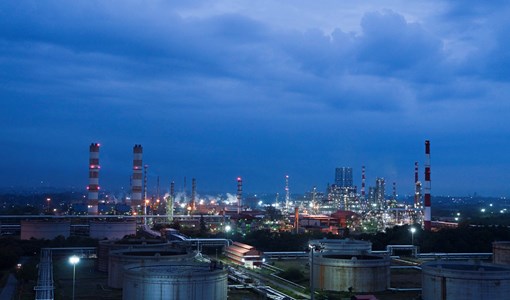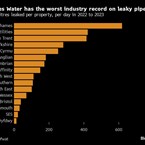Hydrogen set to play a greater role in the energy mix
Liv A. Hovem, CEO of DNV GL – Oil & Gas spoke exclusively with Julian Walker about why hydrogen now has a more certain future and will have a greater role to play in the energy mix.
Pipeline: Why do you think hydrogen has not played a bigger role in the energy mix so far?
The hydrogen economy is still in its infancy, and it’s true that hydrogen has been overhyped in the past. Yet, DNV GL’s recently launched whitepaper ‘Heading for Hydrogen’ – based on a survey of more than 1,000 senior oil and gas industry professionals – suggests a more certain future and that the time is right to begin scaling the hydrogen economy.
Societies globally are aligning on the need to act faster to fight climate change, with several nations already committing to net zero targets for CO2 emissions. Many oil and gas majors have also committed to reducing or eliminating their emissions, and our decade-long study shows a significant rise in the proportion of those questioned reporting that their organisation is actively adapting to a less carbon-intensive energy mix – up from 44 per cent in 2018 to 60 per cent in 2020. Hydrogen has a significant part to play in this. At the end of 2019, one in five (21 per cent) said their organisation was already actively entering the hydrogen market.
The rise of natural gas will also be key CCto hydrogen playing a greater role in the energy mix. Our 2019 Energy Transition Outlook – DNV GL’s independent forecast of world energy demand and supply – forecasts that natural gas will become the world’s largest energy source in the mid-2020s. In this outlook, gas will complement variable renewables throughout the energy transition. Blue hydrogen (produced from fossil fuels, using carbon capture and storage (CCS) to reduce emissions) offers the opportunity to decarbonise this gas.
In short, the future of hydrogen energy is wrapped up with the future of natural gas, renewable energy and CCS – all of which are set to play significantly greater roles in the coming years.
are helping governments and gas operators to demonstrate safe hydrogen production, transmission and consumption. One example is the Hy4Heat programme in the UK, which aims to establish whether it is technically possible, safe, and convenient to replace methane with hydrogen in residential and commercial areas.
The second area is to develop efficient hydrogen infrastructure. Countries with natural gas infrastructure can continue to use those assets in a hydrogen economy. Even where existing infrastructure can be reused or repurposed, there will still be issues to resolve. Our experts are helping companies across the global oil and gas value chain to develop hydrogen-fi t infrastructure. One operational constraint to overcome includes the fact that hydrogen pipeline networks may need to be operated at different pressures (or velocity) than natural gas/biogas. Further research may be needed into whether hydrogen could have an adverse effect on materials (e.g. in pipes and valves) and finally, various appliances would need to be converted or replaced (e.g. water heaters, compressors, pumps and sensors).
Third is the need to scale CCS technology. All major routes to successfully decarbonise gas rely on the large-scale uptake of CCS. More than half of those we surveyed (55 per cent) said that the oil and gas industry cannot decarbonise without greater uptake of CCS. CCS struggles to gain traction because there is a cheaper option for industry: emitting carbon into the atmosphere costs virtually nothing. Our 2019 Energy Transition Outlook finds that CCS will not scale until the 2040s without changes to government policy decisions – the types of bold decisions that stimulated other clean technologies like solar and wind – large-scale uptake can happen. Industry can also play a role by finding ways to reduce the cost of implementing CCS. Some 62 per cent of senior oil and gas industry professionals think the sector should drive adoption forward immediately, and not wait for government policies/incentives.
The final enabler for the growth of hydrogen relates to the need to incentivise value chains through policy. The quicker that government incentivises industry to adopt technology, the quicker the technology goes down the cost-learning curve and becomes independently financially viable. Use cases will create demand for hydrogen, and demand will lead to further investment, lower costs, greater acceptance, and the momentum needed to build sustainable supply chains. But to make use cases a reality, governments and inter-governmental organisations have to make more long-term policy commitments.
Pipeline: How important will hydrogen be in the energy transition to a low carbon world?
Hydrogen has the potential to decarbonise natural gas (and applications that cannot feasibly be run on electricity). It can complement renewables during production lows or high demand, and surplus renewable energy can be used to produce hydrogen, which can be stored as a gas for use in other applications. This is significant, as DNV GL research predicts that natural gas and variable renewables will be the only energy sources for which demand is higher in 2050 than today.
While hydrogen gas produced from renewable energy (green hydrogen) is the industry’s ultimate destination, analysis shows that the sector can only realistically scale-up to large volumes and infrastructure with carbon-free hydrogen produced from fossil fuels combined with CCS technology
(blue hydrogen). Natural gas and hydrogen can play similar roles within the global energy system, and the synergies between them – in application and infrastructure – will drive the hydrogen economy.
Pipeline: What impact will the current oil market environment have on the hydrogen sector?
I don’t believe industry ambition to realise the hydrogen economy will be dampened by the recent oil price crisis. The transition to clean energy is a multi-decade-long quest, and hydrogen has a significant part to play. According to our research in the ‘Heading for hydrogen’ white paper, more than half (52 per cent) of our survey respondents expect hydrogen to be a significant part of the energy mix by 2030.
It has to be said that the industry has reacted quickly to the current oil market environment with operators quick to cut investment following the 2020 oil price drop. However, several oil majors have reaffirmed their low-carbon commitments will continue. Bernard Looney, BP’s recently appointed CEO was quoted as saying that, he was “more convinced than ever” that BP must embrace the energy transition following the collapse of global oil markets.
The oil price has slowed industry activity, but net-zero carbon targets, and the broad societal support for them, remain in place. We are also seeing shareholders pushing the low carbon agenda within major oil and gas companies too.
Pipeline: Which markets have the best infrastructure to make hydrogen?
Blue hydrogen is currently cheaper and easier to create in large volumes than green. Once the required infrastructure and market dynamics are in place, it is expected that boosting blue hydrogen will create enough scale and momentum to make greener gas cost-competitive enough to overtake blue. The creation of a hydrogen grid and user base will provide a market and infrastructure into which hydrogen generated from renewables can be exported.
In the long-term, renewable hydrogen production can be expected to replace hydrogen produced from fossil fuels, eliminating the need for CCS. I think it’s reasonable to say that the countries currently relying on natural gas for heating residential and commercial spaces, such as Australia, Canada, the Netherlands, the UK and the U.S., are most likely to adopt hydrogen at significant scale for space heating. This is because their existing gas infrastructure can be adapted to hydrogen distribution and storage. With that will come hydrogen production.
Australia for example, is laying the foundations for liquid hydrogen exports. Such a hydrogen export industry will require extensive production, storage, and transport technologies. However, decision makers can take lessons from the planning and execution of LNG mega-projects in the country. Another interesting example is the project DNV GL has been undertaking in the Netherlands - the Power2Gas programme being led by Stedin, a Dutch gas and power grid operator. We have been managing and providing expert support to test that homes can be heated by 100 per cent hydrogen replacing natural gas in an existing pipeline for the first time in the country.
Pipeline: How important will collaboration be for hydrogen to reach its true potential?
Collaboration is vital for hydrogen to reach its true potential. To progress to the stage where societies and industry can enjoy the benefits of hydrogen at scale, governments and industry will need to make bold decisions and balance short- and long-term priorities to address the key enablers I mentioned above.
In Norway for example, DNV GL is supporting the government with technical and market analysis to provide a knowledge base for decisions regarding national strategy and policy measures. It’s also about collaboration between organisations and companies to bring together the best technical expertise and experience that will drive this forward.
Pipeline: Are companies seriously looking at hydrogen? If not, what should they be doing?
Yes, I believe that they are. This is backed by our survey data in 2019 where 20 per cent of respondents expected their organisation to invest in or develop hydrogen in the year ahead. The figure for 2020 jumped up to 42 per cent, increasing by an impressive 108 per cent.
Another interesting outcome is the extent to which respondents agreed that hydrogen will be a significant part of the energy mix within 10 years – around the globe this is pretty consistent – with 56 per cent in Asia Pacific, 54 per cent in the Middle East and North Africa, 53 per cent in Europe, 40 per cent in North America, and 37 per cent in Latin America.
KEEPING THE ENERGY INDUSTRY CONNECTED
Subscribe to our newsletter and get the best of Energy Connects directly to your inbox each week.
By subscribing, you agree to the processing of your personal data by dmg events as described in the Privacy Policy.

Chevron helping drive Egypt’s journey to become Africa’s energy powerhouse
Mar 11, 2024
Energy Workforce helps bridge the gender gap in the industry
Mar 08, 2024
EGYPES Climatech champion on a mission to combat climate change
Mar 04, 2024
Fertiglobe’s sustainability journey
Feb 29, 2024
P&O Maritime Logistics pushing for greater decarbonisation
Feb 27, 2024
India’s energy sector presents lucrative opportunities for global companies
Jan 31, 2024
Oil India charts the course to ambitious energy growth
Jan 25, 2024
Maritime sector is stepping up to the challenges of decarbonisation
Jan 08, 2024
COP28: turning transition challenges into clean energy opportunities
Dec 08, 2023
Why 2030 is a pivotal year in the race to net zero
Oct 26, 2023Partner content

Ebara Elliott Energy offers a range of products for a sustainable energy economy

Essar outlines how its CBM contribution is bolstering for India’s energy landscape

Positioning petrochemicals market in the emerging circular economy

Navigating markets and creating significant regional opportunities with Spectrum




























